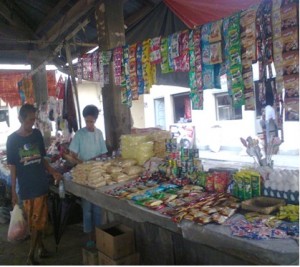Why does DSWD implement a livelihood and employment program?
The poor
cannot
rely
on
conditional
cash
transfers
alone
to
prevent
them
from
under‐investing
in
health
and
education.
They
also
need
to
be
productive,
whether
as
entrepreneurs
or
employees/workers,
which
is
ultimately
their
way
out
of
poverty.

What
is
DSWD’s
livelihood
and
employment
program?
• The
Sustainable
Livelihood
Program
is
a
community‐based
program
which
provides
capacity
building
to
improve
the
program
participants’
socio‐economic
status.
First,
it
supports
microenterprises
to
become
organizationally
and
economically
viable.
Second,
it
links
participants
to
employment
opportunities.
• The specific objectives of the program are:
1.To
facilitate
opportunities
for
the
development
and
management
of
resource
based,
culturally
sensitive,
market
driven
and
economically
viable
micro-enterprises.
2. To
prepare
the
program
participants
for
accessing
locally
available
jobs
that
are
appropriate
to
their
skills
and
capacities.
3. To
sustain
and
expand
the
socio-economic
benefits
gained
by
the
Pantawid Pamilya
beneficiaries
even
beyond
the
five‐year
intervention
of
the
Conditional
Cash
Transfer
(CCT)
intervention
through
the
Sustainable
Livelihood
Program
and
Guaranteed
Employment
Tracks.
4. To
link
poor
families
included
in
the
NHTS‐PR
list,
prioritizing
the
Pantawid
Pamilya
beneficiaries
to
the
support
services
and
programs
provided
by
the
partner
NGAs,
NGOs,
CSOs
and
Private
Sector
for
entrepreneurial
advancement
and
formal
employment.
5. To
link
poor
families
included
in
the
NHTS‐PR
list,
prioritizing
the
Pantawid
Pamilya
beneficiaries
to
micro‐insurance
providers
for
security
measures brought
by
external
shocks.
6.To
continuously
build,
expand
and
update
the
portfolio
of
public
and
private
sector
partners
for
the
job
generation
needs
under
the
Guaranteed
Employment Track.
7.To
promote
comprehensive
family
-based
approach
and
community
participation.
